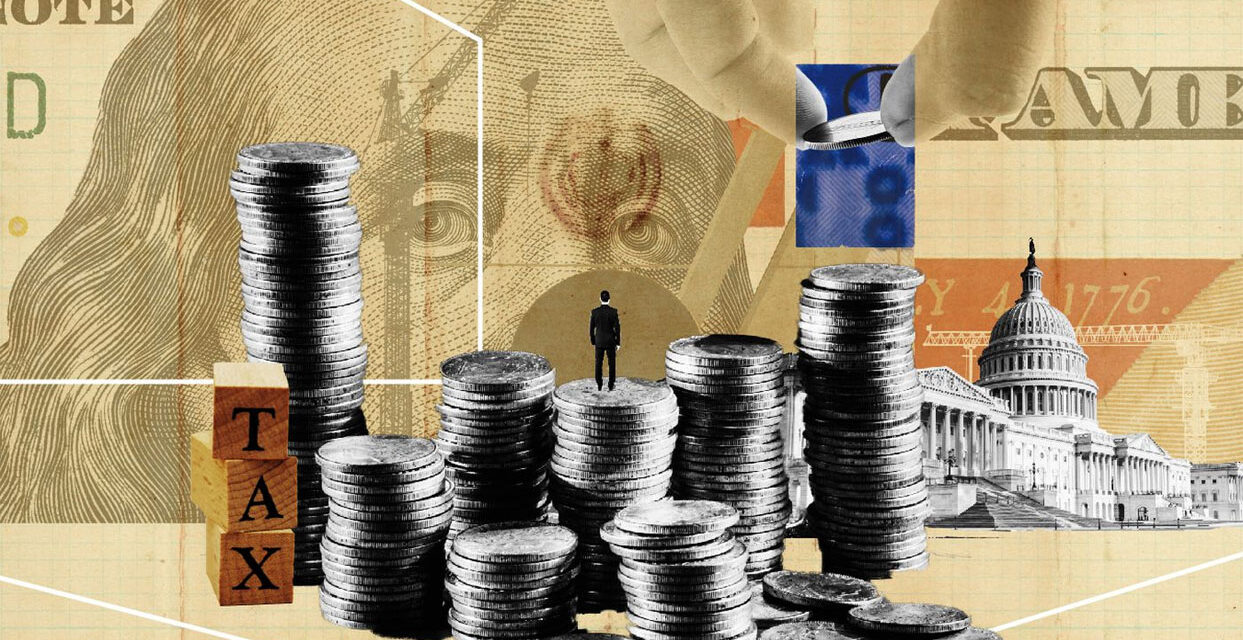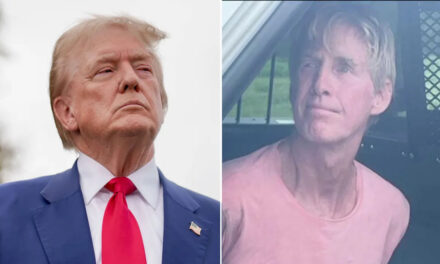
Can We Survive In Our Economy? Modern Monetary Theory Says…Maybe

Modern monetary theory believes that because we are the issuer of money, and because we still control the petrodollar, the American Federal Reserve and government can work together to decide to print an endless amount of money without restriction based on economic necessity without fail and regardless of the dollars connection to real world wealth and resources. The idea is that we can print whatever we need, as long as we are creating jobs, expanding the economy and stretching debt across the world.
The American economy cannot fail, no matter what. And that’s our economic model.
Maybe modern monetary theory is correct and we can print into infinity, continually expanding into greater levels of growth. Artificial intelligence has driven the growth in the stock market over the summer and through recent years, and it still has the potential to drive the economy on forever forward when combined with the digital economy and advancements in robotics. This is possible.
But it is also possible that modern monetary theory could fail us, the economy could crash, and that we have some great issues on the way to work through before we reach the American future of our dreams.
Is success inevitable? Is failure possible?
Soft landing? Hard landing? Stagflation? Hyperinflation?
To think through these possibilities today, let’s take a look over the current state of the American economy.
First, let’s compare where costs are at now with the costs from around the time I was born. At the beginning of the 90’s, the cost of a house was $150,000, the cost of a gallon of gas was $1.16 and a dozen eggs cost $1.
In 2023 today, the average cost of a house is $430,000, the cost of a gallon of gas is $3.75 and a dozen eggs costs $2.04.
A dollar from 1990 has the purchasing power of $2.30 today. Wages have more than doubled from 1990 to 2023. It all seems fairly consistent by the basic numbers. Despite the spiking peaks and valleys of the economy, prices don’t seem too bad in this light, right?
Well let’s take a look at the debt we’ve accumulated over that same time. In 1990, the national debt was 4 trillion dollars. Today, the national debt is almost 33.5 trillion dollars. It took all the years of American history up until 1981 to hit our first trillion dollars of debt, and since that time in the 80’s America has continually buried itself in a mass pile of debt that is seemingly impossible to ever pay off. We’ve added 2 trillion dollars to the debt in the last 3 months. We’ve added an additional half a trillion to the debt in the past two weeks. In one day alone earlier this week, we added 275 billion dollars.
Looking at the dollar in my pocket, 275 billion in a day seems absurd and the thought of 33 trillion dollars of debt seems completely irrational. Imaginary numbers.
This sounds like desperation and failure to me.
We live in a debt economy, so that’s just the way it is, right? It’s modern monetary theory. Print and print as necessary. An argument exists that the economy was separated from reality when we bailed out the banks back in 2008, and since then we have been playing pretend with imaginary numbers. All fine and dandy, until change comes.
What happens when the bills become due and you can’t reasonably print more to pay off the debt? Are we already existing within a debt spiral? What happens when people cannot afford food and shelter, even when employed? What happens when there are mass delinquencies on individuals paying off personal debt? What happens when banks don’t get the money they need or have loaned too much or invested too far? What happens when stocks no longer grow and industry no longer produces? What happens when globalism fails? And can all of this be answered by printing more dollars? More zeros and ones in the system? Force everybody to CBDC’s? What happens when the dollar’s dominance is challenged by BRICS on the world stage?
Too many questions. Too much uncertainty.
Maybe modern monetary theory will ultimately work in practice as time goes forward, but if you ask me my opinion I would say that it has been a great failure to which the extent of the damage done is still entirely unknown. The bottom seems to be being crushed, while the top seems to keep making record profits. The divide between rich and poor feels greater than ever before.
For my personal experience, I don’t own a car, I just left my apartment, I’ve never had a credit card and I don’t have any debt. I also don’t have a school degree, I don’t have a family and I don’t even have a relationship. I don’t have health insurance, but do have a small property and house in the woods. With all of this, I have been working just about every single day of my adult life. Everything feels too expensive to exist and I know I am not alone here.
With 61% of workers reportedly living check to check, it’s understandable why you’re seeing the mass walkouts and protests from various industries like film production, auto workers and healthcare. While their demands often seem too much, it is still just economic realities coming to the light whenever people come out like this over work and pay. With free market capitalism (which I am for) and the creation of artificial intelligence and robotics (which I am also for) workers need to understand that they will be increasingly replaced in the work space, despite their needs, claims and protests. This isn’t the aim of the article here, just saying this to share the stage that is set for how all these things will get worse and the need for better leadership and more steady economic solutions will increase. Regardless, interest rates and inflation seem to be the only thing that has been increasing for the base level of the economy so far.
Despite repeated calls for a soft landing and the talk of a seemingly sound economy, since 1854, a 3% rise in price inflation over 24 months caused a recession within 3 years 77% of the time. We are well above that inflation percentage.Last time rates were at this level, it was 2006. Back then we only had 10 trillion dollars of debt and still failed by 2008. A reflection of today, only in greater standing to fall within the moment. Still, with the change of definition of what a recession actually is, we are still claiming that we are not in a recession and that the possibility of one happening is decreasing.
If you ask me how it looks, I’d say we’ve been in a recession since the pandemic. It feels like, for the poor, that perhaps we have been in a recession since 2008.
Before the 2008 crash, on October 11, 2007, the DOW hit an all time high of 14,198.10. By mid 2008, stock markets fell around 20%. This week, Marko Kolanovic of JP Morgan said that he believes there could be a 20% drop in the stock market in the coming future.
Is it possible that the same kind of scenario could unfold today?
A 20% drop would cause stocks to fall to around 26,700 for the DOW alone. That would only put us back to the same levels we were at around early 2019, a year before the pandemic. It would take greater than a 50% drop to return to levels before 2008. Since we bailed out the banks, the stock market has continued to consistently soar to greater heights. We cannot comprehend a real crash in the economy. Remember that during the great depression, stocks fell around 90%.
No one knows if something like this is possible today, but if it is possible, no one is prepared for what something like that could look like.
This week, the yield on 30 year bonds, or treasuries, hit about 5% for the first time since 2007. The US treasury yield curve has also been inverted since July of 2022. But take a look at these numbers.
3 Month – 5.62% (highest since January 2001)
1 Year – 5.49% (highest since December 2000)
2 Year – 5.51% (highest since July 2006)
5 Year – 4.80% (highest since July 2007)
10 Year – 4.81% (highest since August 2007)
30 Year – 4.95% (highest since September 2007)
Not great.
The housing market is at all time highs, with monthly payments on housing costs now an average of 42% of all median household income. This is 10% higher than rates at the time just before the 2008 housing crash. Mortgage demand is at the lowest levels since 1996, with interest rates around 8%.
As a side note, according to Black Knight, it would take up to a 28% drop in home prices and a 60% gain of median household income to bring back home affordability just to its 25 year average.
For merely an example of my own personal experience, when I moved to West Palm Beach to work in 2015, I got a 3 bedroom house close to downtown for $1200 a month. By the year 2021, I got a 1 bedroom apartment close to downtown for $1450 a month. That’s a massive difference. It’s nearly impossible to be a wage worker and reasonably live life. Again, I know I’m not alone here.
Is it possible that a housing bubble, a bond bubble and a stock bubble all burst at the same time?
On top of all of this too is the price of oil. Prices have jumped again, with crude alone spiking about 33% since the start of the summer. Our reserves of oil are at the lowest level since 1983, with little to no plans of restocking until the price comes down, which may or may not even happen.
It’s important to note too that when oil prices jump 25% over a year’s time, the US economy has gone into recession 46% of the times when this has happened.
60% of consumers say they are having a hard time getting credit and delinquencies on previous credit are at an all time high. The median household income dropped 2.3% in the last year alone, the greatest fall since 2010 and the third consecutive year of decline.
None of this looks good.
The only defense the Biden administration has left to support the idea that the economy isn’t failing is the apparent growth in the job market.
A new jobs report shows that 336,000 jobs were added in September, about double the size of the original expectation. While another report from ADP only showed 89,000 gains, unemployment is above expectations at 3.8% and the average wages of workers went up 4.2%, slightly lower than expected. The new jobs are mainly within hospitality, government and healthcare. Of those 336,000 jobs, only 86,000 were new employees, with the majority being in part time work with great full time losses.
Now the question remains on if the Fed will raise rates any higher or if they will begin to come back down from here. CME Fedwatch predicts a 33% chance that the Fed will still raise rates again by December.
With that, you have a very basic overview of the state of the US economy. We have our own problems, but so does the rest of most of the entire planet. Looking at the world today, it seems like most everyone is having a hard time.
China is dealing with the collapse of its real estate market through failures like Evergrande. Russia and Ukraine are at war. Global prices are spiking from energy to food in every country, with many being buried under the weight. Hyperinflation now exists within Venezuela, Argentina, Turkey, Zimbabwe and Sudan.
In Europe, much like America, energy prices have skyrocketed, inflation has risen and immigration has flooded the countries, posing a heavy burden over the entirety of the system and the working class. Over the past year, these events have caused the usage of the Euro within the SWIFT economic system to drop its transactional market share of usage from 38% to 23%, which is a 12 year low.
In August, not only did BRICS meet, but India and the UAE completed their first oil sale free of the petro dollar and instead only using rupees.
Change isn’t coming, it’s happening.
The same problems ripple around the globe. Housing bubble, stock bubble, bond bubble, commercial real estate collapse, loans, debt, strikes, protests, low resources, high inflation, credit delinquencies, income that isn’t enough and outcomes that ultimately fail.
Can modern monetary theory possibly work? Or is it destined (or designed) to fail?
We’ve kicked the can of a debt economy along the road for a century, so long that we almost cannot remember how it even began or what led up to the events occurring today. Our leadership didn’t know what to do about it when they started their job and our leadership will not know what to do about it today.
So how do we turn this all around?
First, we’ve gotta get better leadership.
I only hope that we can do that and take action forward, before it is too late.
I finished writing this article Friday night after watching the economic news and collecting information through the week. Then Saturday morning I woke up at 3am to turn on my computer and see that Israel and Palestine were at war with each other. Social media became a showcase of the horrors of humanity. Israel was attacked, and then came necessity.
Markets fell in the middle east with the turn of events.
I support Israel in anything that needs to be done here, but I am concerned with the possibility of sending more money away from America. I don’t want any more taxpayer money to foreign countries for war when America is falling apart and we can’t even secure our own border and families are going broke. No money. No boots to the ground. Maybe technology and weapons. We need to take care of our own people here before we become the world police, but I always also support a country’s right to defend itself against an oppressor or to meet a conquering force with force. We will see what needs to happen as events unfold.
I thought about deleting this article and writing a new article on what was happening in Israel, but all of this matters and all of this is ultimately connected. Moving forward, no matter the weight, we have to look at the whole picture and look for leadership that can get us out of the messes we are in today, back to peace and back to business.
If we embrace truth in free market capitalism, the economy will survive no matter if modern monetary theory fails or not. If the printer fails, maybe we should give power back to the people with cryptocurrency, less regulation and a more free market. If the banks fail, maybe we should just let the market decide and not have the government bail them out. Maybe we need to get rid of the idea of too big to fail and let the cards actually fall where they may as the players play the hands they’ve been dealt. If stocks crash, maybe we should stop speculating and get back to creating. If war breaks out, maybe we should just take care of our own and mind our own business. But maybe that’s a thought too much, and maybe that’s just all thoughts ahead of their time.
We’ll see how it goes.
I believe in America. I believe in we the people. I believe we are just getting started and I don’t believe we’re about to fall like the roman empire, but I also believe we’ve got a lot of work to do and that we have to be ready for whatever is to come in the days ahead.
Maybe modern monetary theory will just work.
Business as usual.
But is that even a good thing?

























Machine Head (MHead) says: “Modern monetary theory believes that because we are the issuer of money, and because we still control the petrodollar, the American Federal Reserve and government can work together to decide to print an endless amount of money without restriction based on economic necessity without fail and regardless of the dollars connection to real world wealth and resources.” What does this even mean? Is this Ramaswamnomics?
I found another story, much of which forms the foundation for this one. Amazing how great minds not only think alike, they write alike as well.
“since 1854, a 3% rise in price inflation over 24 months caused a recession within 3 years 77% of the time.” (MHead)
“Since 1854, a 3% rise in price inflation over a 24-month period caused a recession within three years 77% of the time.” ( MICHAEL MAHARREY)
“The US treasury yield curve has also been inverted since July of 2022. “ (MHead)
“The US Treasury yield curve has been inverted since July 2022.” .” ( MICHAEL MAHARREY)
“when oil prices jump 25% over a year’s time, the US economy has gone into recession 46% of the times when this has happened. (MHead)
“When oil prices have spiked 25% over a 12-month period, the US economy has gone into a recession 45.9% of the time.” (Michael Maharrey)
In the words of Captain America, I can do this all night. There’s lots of them. AI anyone?
Good job Frank! Glad to see you’re back talking intelligently!
I say hell yes we can survive. I got my bible, gun and a little hardtack! My horse is saddled and powder is dry! What else do I need buddy!
I thought you said you didn’t have ammo.
Back ? I never left compadre.
In your case, probably just your right hand. Myself. No worries, they tell me I am already communist, so we’ll do just fine.
Actually, I can’t even determine what MHead is ranting about, and it’s certainly not his idea so time to move on. I honestly think he ai’d this one and Joe pays him anyway.